Alexander Murdzevski Schedvin is the head of motorsport at Polestar, which became the in-house performance division at Volvo Cars when the Swedish automaker purchased it earlier this year. We stood next to him on an overcast day in Sweden in the pit lane at the Mantorp Circuit where Volvo had just announced its return to international racing, signing up for a three-year stint in the World Touring Car Championship. This came in spite of saying just 11 months earlier that "motorsport does not conform to our brand, where we stand for smaller engines and safety."Volvo's entry into the 2016 WTCC "boils down to one thing: to bring the world title to Sweden."
Schedvin said Volvo's entry into the 2016 WTCC "boils down to one thing: to bring the world title to Sweden." The Volvo S60 Polestar TC1 racecar that had just been wheeled out in front of us would – eventually, they hoped – be the bearer of gold-plated news.
On the other side of the pit garages were a few S60 and V60 Polestars, samples of the limited-run sedan and wagon we drove last year and declared "phenomenal." The public agreed so much that production of the S60 and V60 Polestar continues, and is getting less limited. We'd flown to Sweden to find out how Volvo planned to link the race car on one side with the road cars on the other, what does it mean for the US that Volvo now has an in-house performance arm, and how racy US Volvos are going to get.

It's important to understand that the Swedes have a wholly different view of performance than our horsepower-and-hole-shot frame of reference. Hans Bååth (pronounced "boat"), Polestar's marketing director, said, "These cars should take you to everywhere you want to go, and you should be able to utilize the performance 365 days a year, not just, 'Now I'm brave enough to push the button.'" When we asked for a clarification that an American mind could quickly comprehend, he said, "I'm going to be faster on Angeles Crest in my Volvo than in your Hellcat on a rainy day.""I'm going to be faster on Angeles Crest in my Volvo than in your Hellcat on a rainy day."
Frankly, that's modest – the average driver will handle Angeles Crest in a V60 Polestar faster than the average driver in a Hellcat on a clear day, because even in the dry the Polestar only needs to be driven, the Hellcat needs to be tamed.
It was Schedvin who laid out the scope and breadth of what a Volvo performance car is about: "We have decided not to be the loudest on the Nürburgring but the fastest from the North to South Pole."
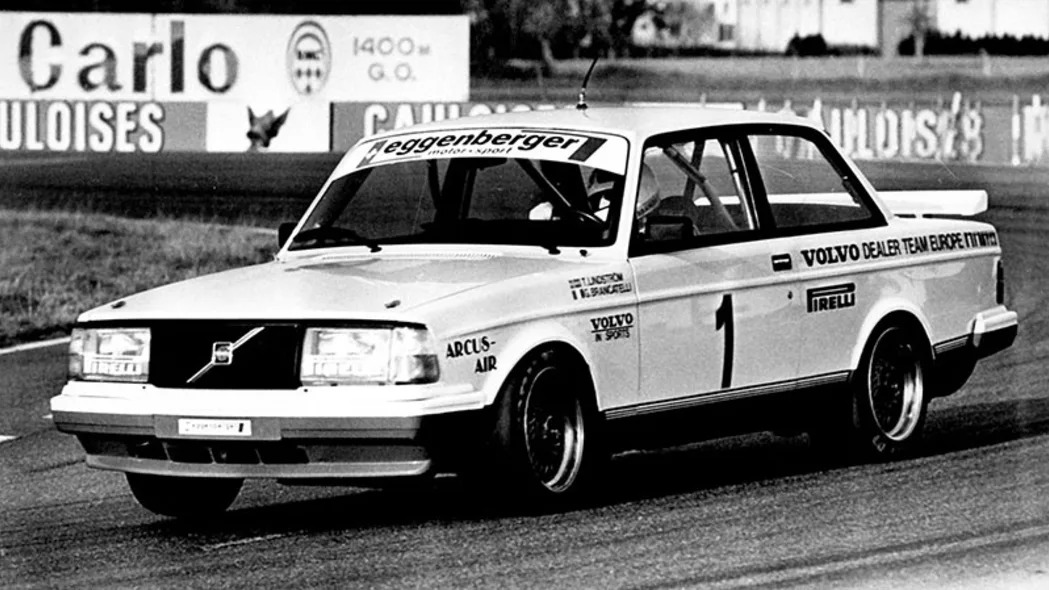
This Ain't Volvo's First Touring Car Rodeo
Volvo made its WTCC announcement on October 13, the same date that, 30 years earlier, the carmaker clinched the driver's title in the European Touring Car Championship with the 240 Turbo. The car nicknamed "The Flying Brick" and its 2.1-liter four-cylinder engine beat competition from BMW, Alfa Romeo, and Rover, who were using six- and eight-cylinder engines, and Ford, Mitsubishi, Mercedes-Benz, and Nissan. That same year The Flying Brick won regional touring car championships in Germany (yes, DTM), Finland, Portugal, and New Zealand, and a right-hand-drive version won the Scottish Rally Championship. The following year it won the Australian Touring Car Championship. The 240 Turbo Evolution road cars built for homologation employed Water Turbo Traction, a fancy name for injecting water into the turbos – as seen on on today's BMW M4 GTS.
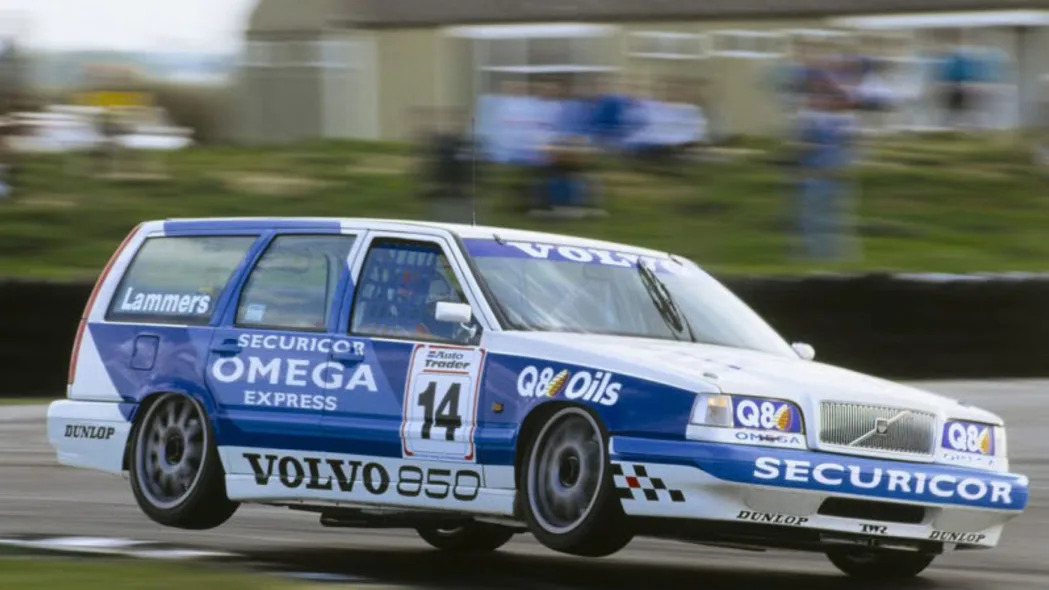
The company's next big splash in touring car racing came in 1994, when the 850 Estate showed up on the start line of the British Touring Car Championship, the 850 sedan taking up the fight a year later. In 1996, the year after it pulled out of BTCC, a Swedish driver named Jan "Flash" Nilsson who had been unable to get a drive in the British series started the Swedish Touring Car Championship (now known as the Scandinavian Touring Car Championship). Volvo was one of the initial manufacturers in the STCC. Nilsson founded Flash Engineering to run Volvo's STCC effort, and it would become Polestar in 2004 after being purchased by Christian Dahl. Since then, Polestar has managed Volvo's global motorsports entries. It's the same kind of setup used for sports car racing at Mercedes-AMG, where a company called HWA – named for Hans Werner Aufrecht, who provides the "A" in the initials AMG – runs the global efforts for AMG.Cyan Racing is the new name for the race team.
With the Polestar name going in-house at Volvo, though, the motorsports arm needed rebranding: Cyan Racing is the new name for the race team. In 2016 it will oversee involvement in the WTCC, a third season in Australia's V8 Supercars, and the STCC – where it has taken the driver's and manufacturer's championship for the past three years with Thed Björk.

Why The WTCC?
There are, of course, technical reasons and marketing reasons. WTCC is global, good for television, comparatively inexpensive, and allows for plenty of production-car technology. A new set of WTCC regulations introduced two years ago permit a smart degree of freedom beyond specific engine requirements. WTCC promoter Francois Ribeiro told us, "Before, touring cars were heavier, closer to road cars – not much downforce, smaller brakes, less aerodynamic. We decided to upgrade the technical regulations to make the cars more appealing, lighter, faster, stronger. Each car manufacturer can still feature his own technology, his own chassis, his own engine, and so on, but now we come up with a racing car that looks more aggressive."
WTCC rules dictate a 1.6-liter turbocharged four-cylinder engine, meaning Volvo can return to the global circuit with a newly developed version of its 2.0-liter four-cylinder turbo motor based off the Drive-E engines in its production cars; to get to 1.6 liters the stroke has been shortened inside the standard block and head. There's power cap, but the displacement and turbo restrictor make it difficult to get more than 400 hp.
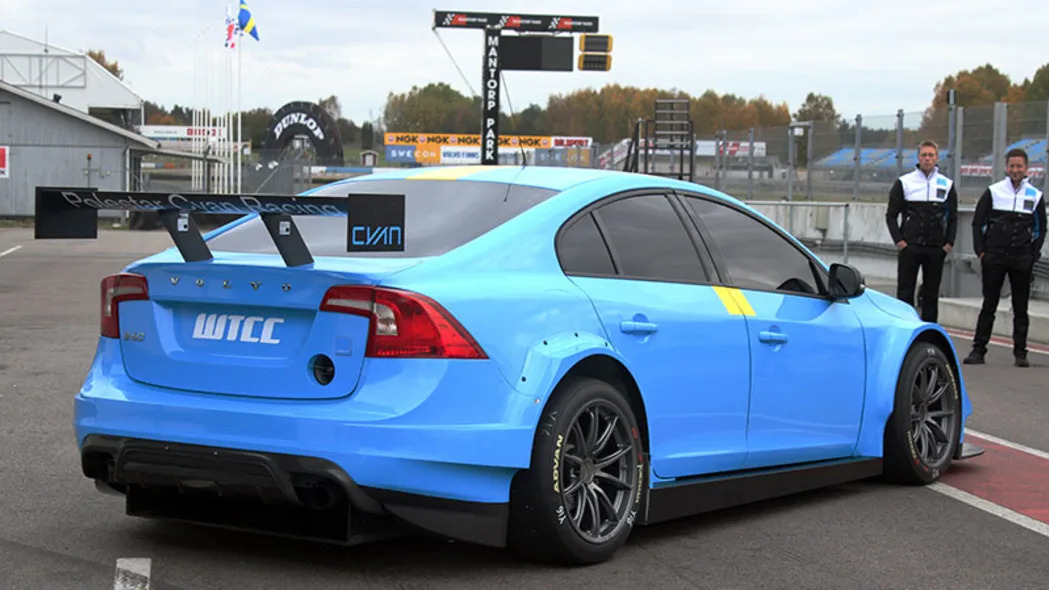
The regulations only define maximum length, width, and weight, so the freedom with chassis and body measurements lets Volvo create a car that stays visually true to the road-going S60 sedan and is a good racecar, creating a clearer connection for the engineers transferring motorsports tech to the showroom cars and for marketers making the pitch to consumers. The STCC and V8 Supercars are primarily spec series'; the STCC uses a mid-engined silhouette car, V8 Supercars mandates a 5.0-liter V8, something you won't find in any production Volvo on the planet.The freedom with chassis and body measurements lets Volvo create a car that stays visually true to the road-going S60 sedan.
Every US reader should know that US motorsports fans have no interest in the WTCC. As far as we could find, the most common definition for the acronym "WTCC" is "WasteTimeChasingCars," the profile name of a once-popular YouTuber. And the WTCC is well aware of our disinterest, which is why it has no plans to return here, for the same reasons that Formula 1 continues to struggle.
Said Ribeiro, "A championship featuring mass-market manufacturers, and brands like Volvo for which USA is a priority, we should look into the USA obviously. I would consider it, but I learned my lesson and the lesson is very clear: in the USA if you pretend you can make a successful event and break through media and to the motorsport audience without a US driver – and a good one – no chance."
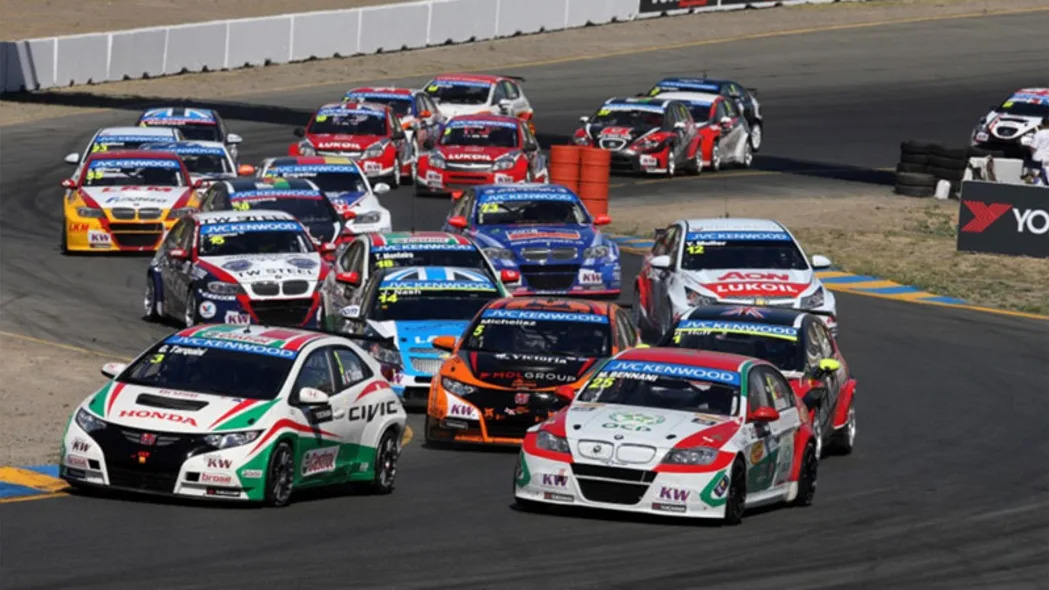
The lesson he's referring to are the two years the WTCC came to Sonoma, in 2012 and 2013. The canceled race in 2014 was blamed on logistics issues, but the lack of cultural penetration ensured it wouldn't return. Ribeiro continued, "Sonoma was perfect. But get me Danica Patrick in the car, or get me a US driver who wins something on his territory and we'll go back racing in the USA. Without this I would not take the chance. I have nothing against the idea of going back to the USA. But having Honda or Volvo, which are strong on the US market, is just not enough."
On a side note, there is but one degree of separation between the tribulations experienced by both F1 and WTCC in the US: the WTCC driver's champion for the last two years is Jose Maria Llopez, the Argentine racer who was once signed to drive for the failed USF1 team.Volvo will still use WTCC to help move cars in the US, but not with a "Win on Sunday, sell on Monday" approach.
Volvo will still use WTCC to help move cars in the US, but not with a "Win on Sunday, sell on Monday" approach. Said Schedvin, "I don't think customers will buy the brand that won the race, but it's a lot easier to explain to a customer that the car they can buy is actually technologically connected to the racecar."
Added Polestar's Bååth, "Our buyer is probably not in the stands, so it's up to us to utilize motorsport both in product development but also just getting the message through. And obviously a gold medal cannot ever be wrong."
The message it will be selling to you in showrooms, then, is that Volvo can take on known racing brands like Chevrolet, Honda, Citroën, as well as Lada, and win with a car that isn't far off the one the salesman is trying to get you in. Said Cyan Racing owner Dahl, "With the new TC1 regulations you can make the brakes, suspension, aero, engine, gearbox – everything is free but it's based on standard Volvo materials." So all Volvo has to do is, you know, actually win.
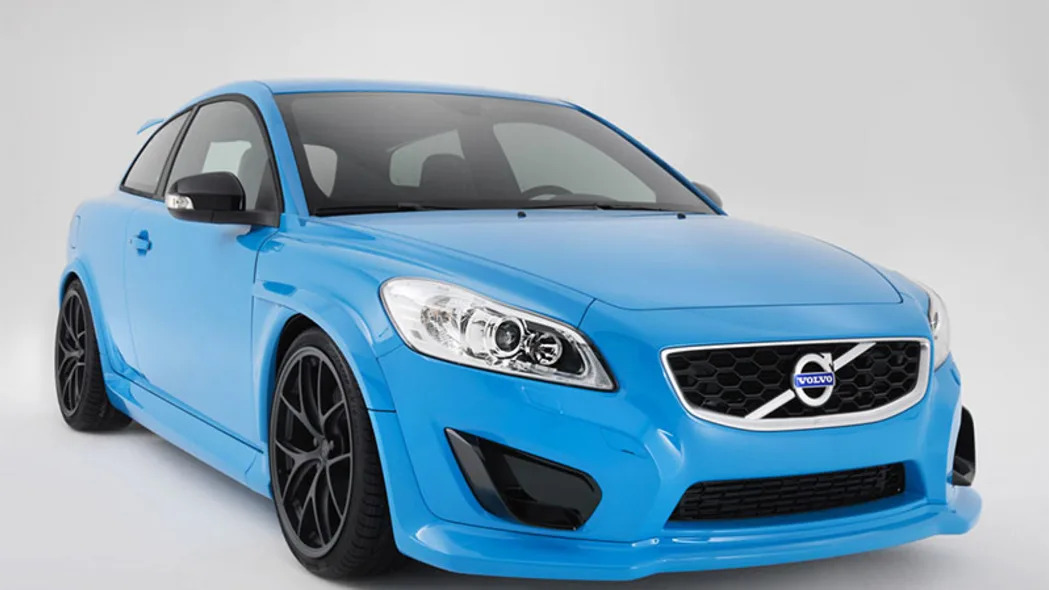
How Polestar Makes A Performance Car: One Man, One Car, Total Grip
A year ago we went to Sweden and were shocked at how good the S60 and V60 Polestar cars were. This year we went to Sweden and were shocked at how those cars were created. Almost all of us know AMG's story of "one man, one engine." In the case of the Polestar twins it's, "one man, one car."
The man is Robert Dahlgren, a Polestar racing and development driver for 12 years, STCC champion for one of them, V8 Supercar driver last year. Dahlgren said that when Polestar created its first concept car, the C30 Polestar Performance Prototype Concept in 2010, "Christian basically called me up and said, 'Take a C30 and use your imagination. Just try to keep it as fun as possible.'" Dahlgren worked with one other person, his race engineer.
The feedback was so strong it begged an encore, and in stereotypical Swedish understatement, Dahlgren said, "I got a call from Christian again about the S60 concept car, he said people seem to appreciate [the C30 concept], so keep doing what you're doing."In the case of the Polestar twins it's, "one man, one car."
The team grew by one with the 508-horsepower S60 Polestar concept car – a Volvo chassis engineer joined. It grew slightly larger with the production S60 and V60 Polestar cars but not by much, according to Dahlgren. "It was me, my race engineer, Pat who runs the WTCC program here as a race engineer, Per Blomberg the head of chassis development, and a couple of other people came along from Volvo."
That's six people to develop a production performance car for a global manufacturer, five of them there to carry out Dahlgren's wishes. He said early on they decided to go with Öhlins dampers because Polestar already had 15-year relationship with them. Bååth said the Öhlins on the Polestars are more refined than those on the Lamborghini Aventador – the only other production road car to use Öhlins – and Polestar builds the shocks and uprights itself.
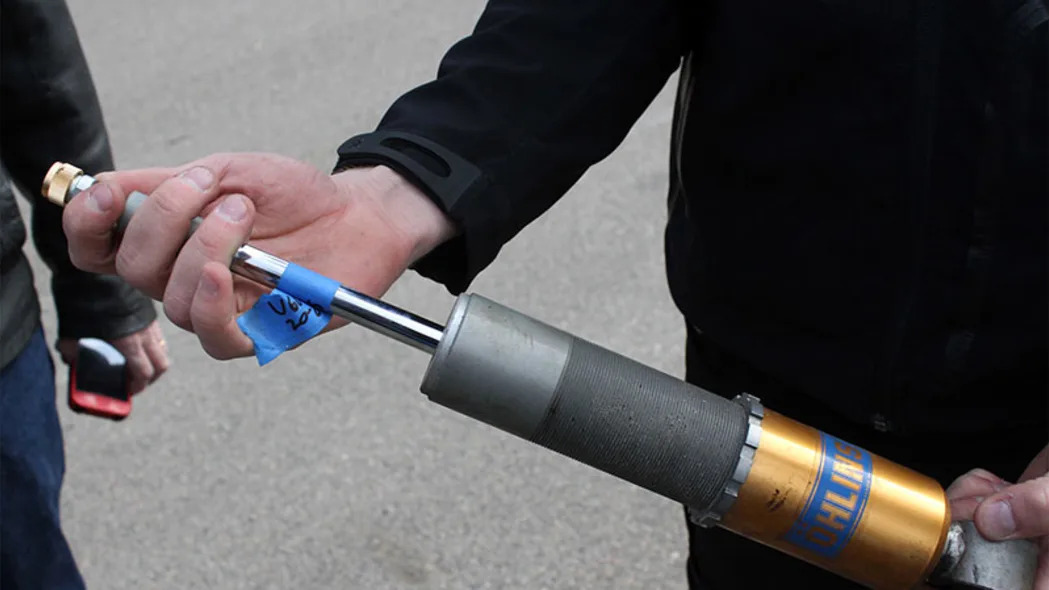
Schedvin said, "It's extremely difficult to appreciate the way the S60 and V60 Polestar is built – allowing a racing team and a racing driver to have the final say in what components you use on the car and how much you spend on components. The setup we have with Polestar is basically that the purchasing department is not allowed to specify the car, [so] you can get something that you won't [get] even if you buy an M3 or an AMG, because even in a car like that there's a purchasing department saying, 'You're not allowed to spend more than $300 on shocks for this car.'"
It's one thing to promise race-derived engineering in a street car, it's another to enforce racecar principles. Said Dahlgren, "We get the question so many times, 'Why do you not bring more horsepower?' Because we need to match the horsepower to the grip when you get on throttle, like you do with a racecar." That focus is why, as we wrote in our review, it feels like the V60 Polestar has every hoof of every one of its 350 horsepower on the ground, working.Taking Polestar in-house will likely create larger development teams, but both companies are adamant that the development philosophy won't change.
"To challenge BMW and Audi or whatever with horsepower was never a target," Dahlgren said. "It was to maximize power and grip together." That is antithetical to modern views of a performance car in many countries, especially here in the US where we can't get enough of V8-powered Mazda Miatas and we recently saw a bumper sticker that read, "You can never have too much horsepower or ammunition."
Taking Polestar in-house will likely create larger development teams, but both companies are adamant that the development philosophy won't change. The Polestar division is housed on a separate estate in Gothenburg away from Volvo headquarters to enforce its status as a separate, independent brand, and Polestar is barred from hiring Volvo employees from certain departments. Only the purest racing blood is allowed.
Dahlgren, who is working on next year's V60 and S60 Polestars that will switch from the 3.0-liter inline six-cylinder to the 2.0-liter Drive-E four-cylinder, said things are even better now. "It's still a small project, almost quicker because we're not Polestar coming to Volvo saying, 'Can we have this,' 'Can we do that;' now it's Volvo saying 'We'd like that,' and they say 'Oh yes, here you go.'" He's says the new V60 Polestar arriving early next year will be different "in a lot of areas," and said that more advanced base of the new Drive-E engine will deliver an even better, more high-tech car.
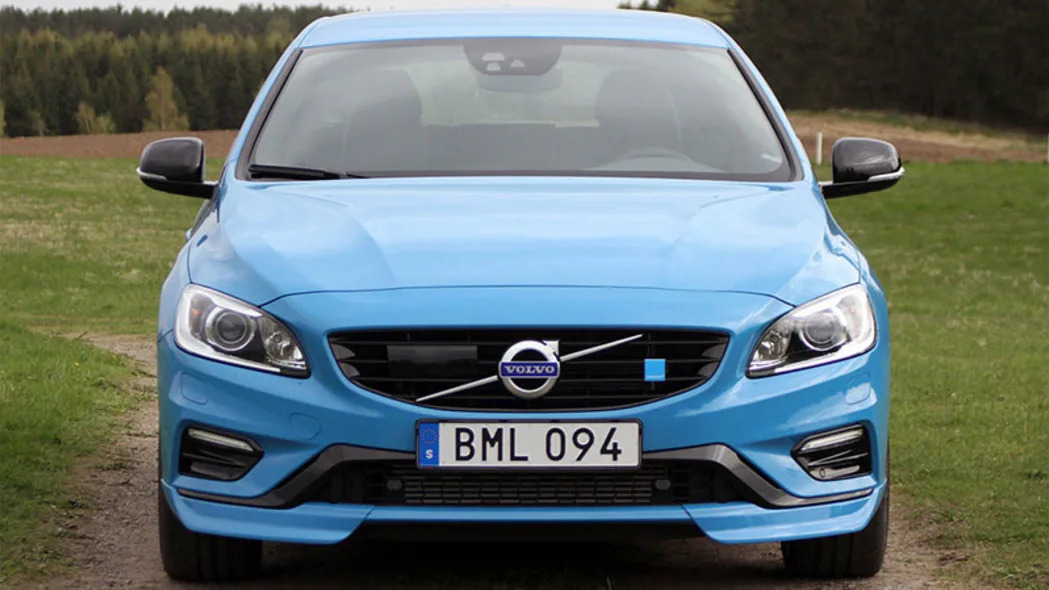
What About US?
What all this means for the US is, first of all, more fast Polestar Volvos. Volvo really does plan on treating its new division like an AMG or an M division, with Bååth saying, "This is just the start," and former Polestar owner Dahl adding, "In a couple of years I think there will be five or six models."
Looking at the Volvo USA site, though, we wonder where the three or four additional models would be. Our safest guess for candidates would be the coming V40 crossover and the S90 sedan. If Volvo wanted to get into the performance crossover segment, a market that shows no sign of weakness, perhaps the XC60 could get a dress rehearsal. And in our hallucinations we can see a Polestar-ized V90 wagon – one with a factory-installed holding pen for a unicorn in the cargo area. Bååth said, "What you see coming in terms of Volvo for the future, we will be working with most of these cars in one way or another.""In a couple of years I think there will be five or six models."
That might not be via a complete Polestar overhaul but through dealer-installed performance parts, which Volvo plans to start selling at dealerships. A pilot program will soon launch in Europe, with dealer salespeople able to show customers how they can upgrade their car with race-derived components like dampers, springs, stiffening bars, and wheels. Bååth said, "We expect that when you order your car and the dealer realizes that you are a driver, he will help you fit the car to your needs." Once the company has fleshed it out, that parts program will expand and come to the US. We've been hearing about this kind of thing for four years, it looks like it's finally going to happen.
Polestar optimization programs, the tuned software packages that eliminate any sluggishness from a standard Volvo, will also play a larger role.
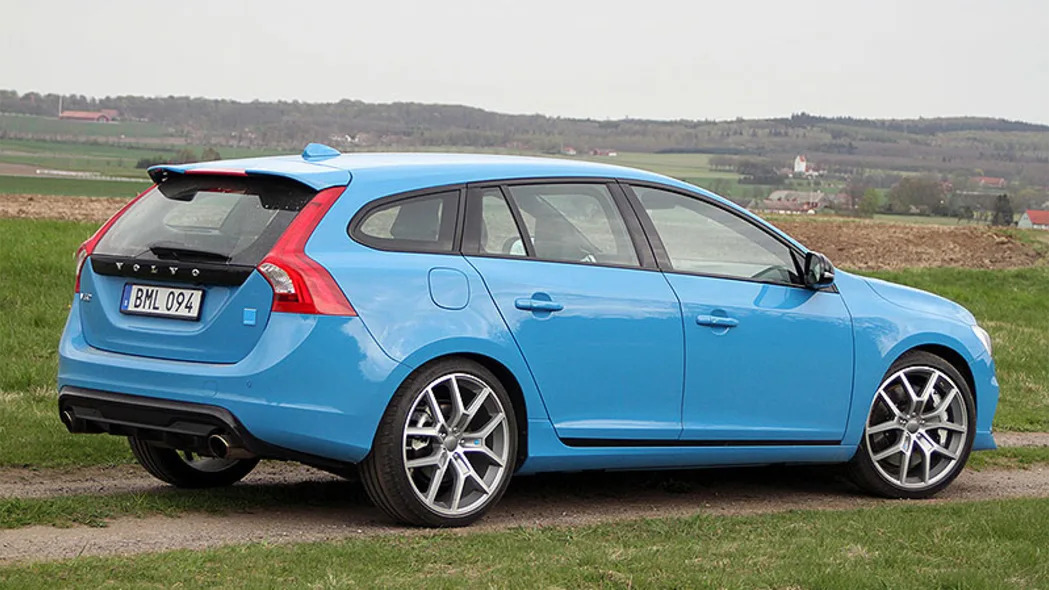
As for that bit about motorsports not conforming to a brand traditionally focused on safety, Bååth had the kind of answer you'd expect from a racer who competes in Swedish rallies on weekends. "There is no contradiction between our focus on performance and the Volvo brand – there has never been a Volvo with so much physical grip as the V60 Polestar, so you could say that this is the safest Volvo ever. We have all the same technology, the cars are built in the same factory with the same quality standards, the only thing we add is higher precision, more grip, higher responsiveness." Sounds plenty safe to us."You have to really be focused because when it grows you can't dilute it, can't just turn into a line. It has to be a proper performance car."
A note for the record is what we were told Polestar won't be doing: trim lines or sticker packages. When we asked Bååth if we were going to see Polestar stripes on sale at Volvo dealers, he replied, "We won't say there will never be exterior detailing, but the focus will be on drivetrain. The way you put it, no, it won't happen."
Dahl was even more against racing stripes even though he's no longer the owner, responding immediately that if he sees them, "I'm going to go to Polestar and talk to someone. Volvo had 'R' and that turned into R Design. I don't want to see P Design, and I'm sure it won't happen. You have to really be focused because when it grows you can't dilute it, can't just turn into a line. It has to be a proper performance car."
We've heard that before, but never from the Swedes. Let's hope they're as good with their word as they are with their cars.










Sign in to post
Please sign in to leave a comment.
Continue